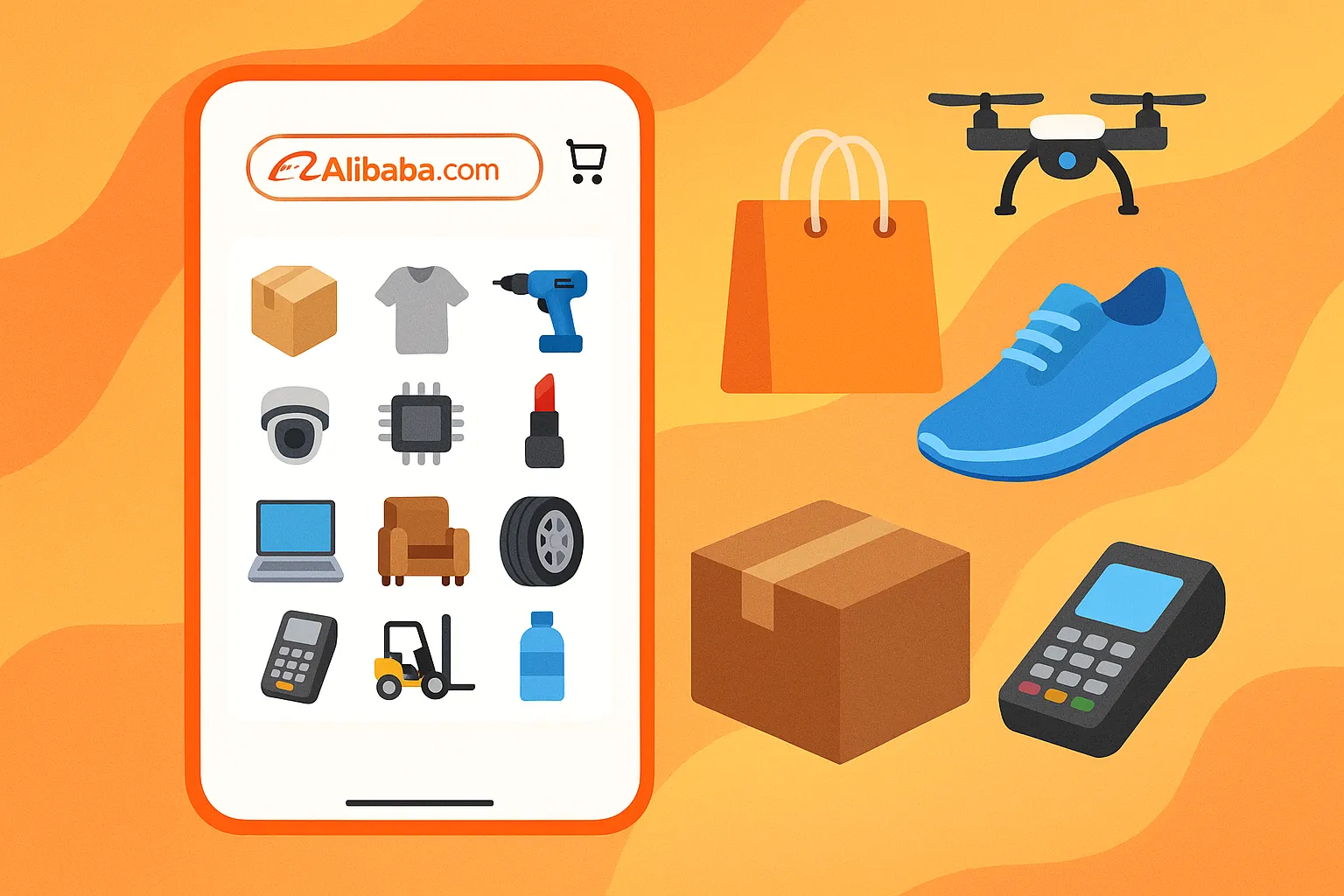Business Model of Alibaba has become a household name in e-commerce, logistics, and digital payments. Founded in 1999 by Jack Ma, Alibaba revolutionized how businesses and consumers buy and sell goods online. From small merchants in China to global brands, millions rely on its vast ecosystem.
Studying the business model of Alibaba is essential for any entrepreneur aiming to launch a scalable marketplace platform. It shows how a well-designed ecosystem can drive revenue from multiple sources—while empowering sellers, buyers, and service providers. Whether you’re building a B2B marketplace or a consumer-facing e-commerce app, Alibaba’s success offers invaluable lessons on platform strategy, monetization, and growth.
What is Alibaba & How It Works
Alibaba is a multi-layered e-commerce platform connecting buyers and suppliers worldwide. Originally launched as a B2B marketplace, Business Model of Alibaba.com helps manufacturers and wholesalers showcase products to a global audience. Over time, the company expanded into B2C and C2C models through platforms like Taobao and Tmall.
What Problem Does Alibaba Solve?
- Market Access: It breaks down barriers for small and medium enterprises (SMEs) to reach international buyers without costly intermediaries.
- Trust and Security: Alibaba’s escrow and verification services build trust between parties who have never met.
- Operational Tools: From logistics to payments, Alibaba offers integrated solutions that streamline online commerce.
Who Uses It?
- Small manufacturers looking to export globally
- Wholesale buyers sourcing products in bulk
- Entrepreneurs launching private-label brands
- End consumers purchasing retail products on related platforms like Taobao
How Does the Platform Work Operate?
- Marketplace Listings: Sellers create storefronts and product listings.
- Verification & Trust: Alibaba verifies suppliers (Gold Supplier memberships) and offers buyer protection.
- Transaction Facilitation: Payments are processed through Alipay (Alibaba’s payment arm), which holds funds in escrow until orders are fulfilled.
- Logistics & Fulfillment: The company integrates with logistics providers (Cainiao Network) for shipping and tracking.
- Advertising & Promotion: Sellers pay for visibility and sponsored listings to reach more buyers.
Read More : What is Alibaba App and How Does It Work?
Target Audience for Alibaba Explained
Alibaba’s ecosystem serves a wide spectrum of customers, each with unique needs and purchasing behavior. Understanding these core segments is key to appreciating how the platform generates revenue at scale.
Typical Users and Customer Segments:
- Small and Medium Enterprises (SMEs):
Manufacturers, distributors, and wholesalers in China and other countries use Alibaba to reach international buyers. Many rely on Alibaba as their primary sales channel. - Large Enterprises:
Global retail brands and trading companies source raw materials and finished goods through Alibaba’s B2B marketplace. - E-commerce Entrepreneurs:
Dropshippers and private-label sellers leverage Alibaba to find suppliers for products sold on Amazon, eBay, or Shopify. - Individual Wholesale Buyers:
Small retailers or community buyers sourcing bulk quantities for local resale. - Third-Party Service Providers:
Logistics companies, customs brokers, and quality inspection agencies participate in Alibaba’s ecosystem to support transactions.
By serving both supply and demand sides, Alibaba ensures a continuous flow of commerce—driving engagement, transactions, and revenue from multiple channels.
Features that Support the Business Model
Alibaba’s success is driven by a set of core features designed to generate revenue and keep buyers and sellers active on the platform. Here are some of the most important:
- Gold Supplier Memberships
Verified supplier status that builds trust and improves visibility. Sellers pay annual fees for these premium listings. - Escrow Payment Protection (Trade Assurance)
Buyers’ payments are held in escrow until order fulfillment, reducing fraud and encouraging large transactions. - Advanced Search & Filtering
Powerful search tools help buyers quickly find products by category, price, MOQ (minimum order quantity), and certifications. - Advertising & Sponsored Listings
Sellers can pay for keyword-based advertising and priority placement in search results to increase exposure. - Integrated Logistics (Cainiao Network)
Alibaba offers end-to-end logistics solutions including warehousing, shipping, and customs clearance. Fees are collected on transactions and services. - Data Analytics & CRM Tools
Suppliers access dashboards to track inquiries, orders, and buyer engagement—driving repeat business and upsells. - Mobile App Access
Buyers and sellers manage their transactions from anywhere, improving convenience and increasing daily active users.
Together, these features create a sticky platform where commerce, advertising, and logistics all intersect to form multiple revenue streams.
Read More : Best Alibaba Clone Scripts in 2025: Features & Pricing Compared
Revenue Streams of Alibaba
Alibaba’s business model is a masterclass in monetizing a marketplace ecosystem. The company doesn’t rely on a single income source—it combines subscription fees, transaction fees, advertising, and value-added services.
Below is a clear table outlining the main revenue streams and how each works:
| Revenue Stream | Description |
| Membership Fees | Annual fees from Gold Supplier memberships and verified profiles. |
| Advertising & Promotion | Fees for sponsored listings, keyword ads, and banner placements. |
| Transaction Commissions | Commissions on successful orders processed via Trade Assurance and Alipay. |
| Logistics Services | Revenue from warehousing, shipping, and customs through Cainiao Network. |
| Data Services & Analytics | Subscription fees for advanced analytics and buyer insights. |
| Cross-Border Services | Fees from import/export support and compliance services. |
| Cloud Services & SaaS Tools | Income from Alibaba Cloud, hosting, and business productivity solutions. |
Short explanations of each:
- Membership Fees:
Suppliers pay annual subscriptions to get verified status, higher search rankings, and premium features. - Advertising & Promotion:
Sellers bid on keywords and buy placements to increase product visibility and inquiries. - Transaction Commissions:
Alibaba collects a percentage on transactions completed through the platform’s secure payment system. - Logistics Services:
Fees are charged for integrated shipping, warehousing, and tracking. - Data Services & Analytics:
Tools for CRM, performance tracking, and buyer behavior insights help sellers optimize sales. - Cross-Border Services:
Support for international trade compliance, customs, and local regulations. - Cloud Services & SaaS Tools:
Alibaba Cloud and enterprise software are growing contributors to overall revenue.
Cost Structure of Running Alibaba
Running a platform as large and complex as Alibaba comes with significant costs. Here are the primary expenses involved in maintaining and scaling the business:
- Platform Development and Maintenance
Ongoing investment in software engineering, mobile apps, and system infrastructure to ensure stability and innovation. - Cloud Infrastructure
Hosting millions of listings, transactions, and data analytics on Alibaba Cloud requires substantial resources. - Payment Processing and Compliance
Managing secure escrow transactions, regulatory compliance, and anti-fraud measures involves continuous operational costs. - Logistics Operations
Warehousing, fulfillment, and last-mile delivery through Cainiao Network generate both fixed and variable expenses. - Customer Support and Dispute Resolution
Dedicated teams handle seller onboarding, buyer protection claims, and global support in multiple languages. - Marketing and Brand Promotion
Global advertising campaigns to attract new suppliers and buyers, as well as ongoing seller acquisition costs. - Research and Development
Investment in AI tools, recommendation engines, and new marketplace features to stay ahead of competitors.
For founders planning a similar platform, it’s essential to budget for both fixed infrastructure and variable costs that scale with transaction volume.
2024–2025 Innovations or Updates
Alibaba has recently rolled out several updates and strategic shifts to strengthen its position in global e-commerce and technology. Here are some of the most notable developments:
- AI-Powered Product Recommendations
Enhanced machine learning algorithms personalize product suggestions, driving higher conversion rates for sellers. - Cross-Border Payment Upgrades
Alipay has introduced faster settlement times and support for more currencies, reducing friction for international transactions. - Sustainable Logistics Initiatives
Cainiao Network is expanding green warehousing and electric delivery fleets to lower carbon emissions. - New Seller Tools
Advanced analytics dashboards and CRM features have been added to help suppliers better understand buyer behavior. - Expanded Cloud Services
Alibaba Cloud continues to diversify its SaaS offerings, providing enterprise-grade solutions to businesses beyond e-commerce. - Live Streaming Commerce
Interactive live-stream shopping features are being integrated more deeply across marketplaces to boost engagement and sales. - SME Empowerment Programs
New financing options and training resources support small businesses entering the platform, making it easier to onboard global sellers.
These innovations highlight Alibaba’s focus on scaling its ecosystem while staying relevant to changing consumer and business needs.
Read more : Unlocking the Secrets of Alibaba App Marketing Success
Takeaways for Startup Founders
If you’re planning to build a marketplace platform inspired by Alibaba, there are several important lessons to learn:
- Build an Ecosystem, Not Just a Marketplace
Alibaba’s strength comes from integrating payments, logistics, advertising, and cloud services into one seamless experience. When you solve multiple problems for buyers and sellers, you create stickiness and recurring revenue. - Prioritize Trust and Transparency
Features like verified supplier memberships and escrow payments (Trade Assurance) reduce friction and build confidence. Consider implementing similar safeguards from day one. - Diversify Revenue Streams
Don’t rely solely on transaction fees. Subscriptions, advertising, and value-added services help balance your cash flow and make your business more resilient. - Leverage Data for Growth
Alibaba empowers sellers with insights and analytics. Providing your users with performance dashboards and customer data can increase their success—and yours. - Stay Agile with Innovation
From AI-powered recommendations to live shopping, Alibaba continuously adapts to user expectations. Be ready to evolve your product as technology and customer behavior change.
Read more : Reasons startup choose our Alibaba clone over custom development
Why Work with Miracuves?
At Miracuves, we specialize in ready-made marketplace solutions inspired by proven models like Alibaba. Our Alibaba Clone gives you:
- Scalable infrastructure to handle large catalogs and transactions
- Integrated payments, escrow, and verification systems
- Customizable design to match your brand
- Ongoing support, updates, and feature enhancements
If you want to launch faster and focus on growth instead of building from scratch, our expert team can help you bring your marketplace vision to life.
Conclusion :
Alibaba’s business model is a powerful example of how an integrated platform can transform entire industries. By combining marketplace listings, payment protection, logistics, and cloud services, Alibaba has built a resilient and profitable ecosystem that serves millions of businesses worldwide.
If you’re an entrepreneur aiming to launch a similar platform, learning from Alibaba’s approach is invaluable. You don’t have to reinvent the wheel—partnering with experts who understand how to build scalable marketplace technology can save you time, money, and frustration.
Ready to build your own Alibaba-style marketplace?
Explore our Alibaba Solution and see how Miracuves can help you launch a high-performance platform tailored to your goals. Get in touch today to schedule a free demo and consultation.
FAQs :
1. How does Alibaba make money without holding inventory?
Alibaba operates as a platform rather than a retailer. It connects buyers and sellers and earns revenue through membership fees, transaction commissions, advertising services, and logistics. Because sellers handle their own inventory, Alibaba avoids the cost and risk of warehousing products itself.
2. What is the role of Alipay in Alibaba’s business model?
Alipay, part of Ant Group, is Alibaba’s secure payment system. It provides escrow services that protect both buyers and sellers, holding funds until orders are confirmed. Alipay also generates revenue through payment processing fees and financial services.
3. What makes Alibaba different from Amazon?
While Amazon acts as both a marketplace and a direct retailer (buying and selling inventory), Alibaba focuses primarily on enabling third-party transactions. Its business model relies heavily on platform services, supplier subscriptions, and logistics partnerships rather than retail margins.
4. Can small businesses outside China sell on Alibaba?
Yes. In recent years, Alibaba has expanded cross-border trade and simplified onboarding for international sellers. The platform offers tools for compliance, payments, and logistics to make global selling easier.
5. How can I build an app like Alibaba?
Building a marketplace like Alibaba requires secure payment systems, scalable infrastructure, logistics integration, and trust mechanisms. Miracuves offers an Alibaba Clone that includes these essential components—so you can launch faster and focus on growing your business.
Related Articles :








